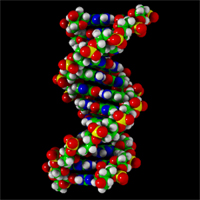Difference between revisions of "X-gene"
m (→The X-Gene) |
|||
| Line 8: | Line 8: | ||
==The X-Gene== | ==The X-Gene== | ||
| + | |||
| + | (provided by [[Amanda]] | ||
'''What is the "x-gene" defined as?''' | '''What is the "x-gene" defined as?''' | ||
| + | The x-gene is not a single gene, but rather part of the X-gene complex. The X-gene is one discrete complex within the | ||
| + | genome (which gives you your markers to find "the X-gene") but with the manifestations being differing complexes of genes within that X-gene (and possibly other alterations within the other parts of the genome where required). The expression of genes is NOT related to you having them. | ||
| + | |||
| + | Everyone has vast quantities of genes that turn on and off at different points in their lives, primarily due to different environmental triggers. And the trigger for one gene turning on, can then lead to a cascade effect of | ||
| + | others turning on. And some never turn on - for example, we all have things called oncogenes, which will give you cancer if they turn on. For many, many, many people in the world, these oncogenes never turn on and you don't get cancer. | ||
| + | So, basically, for example, [[Kurt Sefton]] would have had the X-gene in his genome and certain changes to his physiology expressed during the fetal development process - thus his physical manifestations that were obvious at birth. However, he had other parts of his X-gene that required different triggers to express; when he hit puberty and certain hormonal processes started working, those parts of his X-gene complex expressed. And hey presto, teleportation. | ||
| + | In genetic terms, the spontaneous abortion rate in the mutant population would have to be immense... Genetically, what happens to X-mutants is beyond the realms of anything sane. Mutations that cause large-scale physical changes are, in the VAST majority of cases, deleterious. Generally to the point of the fetus spontaneously aborting early in gestation (in human terms, before most women know they're pregnant). Certainly to the point of seriously ongoing health problems. | ||
==Testing for the X-Gene== | ==Testing for the X-Gene== | ||
Revision as of 16:36, 7 June 2011
| The X-Gene | |
|---|---|

| |
| First Seen: | N/A |
Contents
The X-Gene
(provided by Amanda
What is the "x-gene" defined as?
The x-gene is not a single gene, but rather part of the X-gene complex. The X-gene is one discrete complex within the genome (which gives you your markers to find "the X-gene") but with the manifestations being differing complexes of genes within that X-gene (and possibly other alterations within the other parts of the genome where required). The expression of genes is NOT related to you having them.
Everyone has vast quantities of genes that turn on and off at different points in their lives, primarily due to different environmental triggers. And the trigger for one gene turning on, can then lead to a cascade effect of others turning on. And some never turn on - for example, we all have things called oncogenes, which will give you cancer if they turn on. For many, many, many people in the world, these oncogenes never turn on and you don't get cancer.
So, basically, for example, Kurt Sefton would have had the X-gene in his genome and certain changes to his physiology expressed during the fetal development process - thus his physical manifestations that were obvious at birth. However, he had other parts of his X-gene that required different triggers to express; when he hit puberty and certain hormonal processes started working, those parts of his X-gene complex expressed. And hey presto, teleportation.
In genetic terms, the spontaneous abortion rate in the mutant population would have to be immense... Genetically, what happens to X-mutants is beyond the realms of anything sane. Mutations that cause large-scale physical changes are, in the VAST majority of cases, deleterious. Generally to the point of the fetus spontaneously aborting early in gestation (in human terms, before most women know they're pregnant). Certainly to the point of seriously ongoing health problems.
Testing for the X-Gene
How is the x-gene tested for?
What can be determined from the test?
What sort of tests are available, and how do they differ?
How common are testing facilities and the equipment capable of determining mutancy?
Socio-Political Issues
What countries have mandatory testing?
Currently, the only country that has been established in X-Project as having mandatory testing for the x-gene is Canada.
Canada tests children between 6-10 as part of the health system, in order to ensure appropriate training and management is employed as per the Omega Flight program.
It can be assumed, however, that various countries also have mandatory tests for a number of reasons, from controlling the mutant population to weaponisation projects to diverting mutants into special programs.
In what circumstances are individuals tested for the x-gene?
In countries where testing is not mandatory, it can be conducted for a number of reasons:
- Health: In circumstances where an illness may be related to a mutation, medical facilities will order testing as part of the normal diagnostic procedure.
- Social Welfare: If an individual may be at risk of harming themselves or others with an undisclosed mutation, testing can be ordered.
- Prison Security: For the protection of prisoners and staff, testing is conducted to determine if there is a risk of a young detainee manifesting in prison.
- Privately Funded Testing: In much the same way paternity tests can be paid for and conducted at the behest of individuals, x-gene testing can also be obtained. It is, however, expensive and not always accurate, depending on which test is being conducted and if the service is a reputable one.